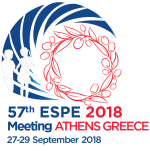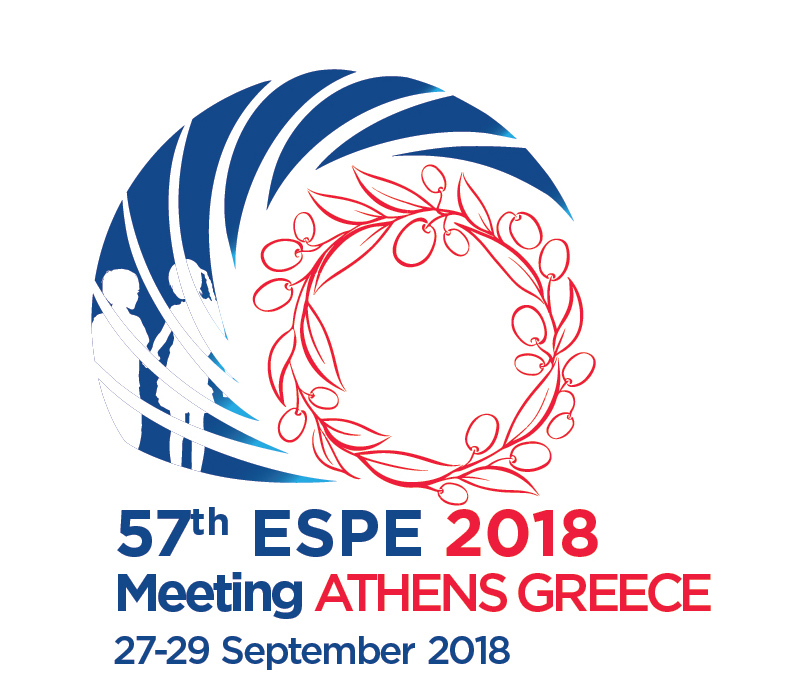
57th Annual ESPE
Athens,
Greece
27 Sep 2018 - 29 Sep 2018

Poster Presentations
Bone, Growth Plate & Mineral Metabolism P1
hrp0089p1-p025 | Bone, Growth Plate & Mineral Metabolism P1 | ESPE2018
Intrauterine Growth Restriction, Antenatal Steroids, Gestational Age and Breast Feeding Influence Bone Health in Prepubertal Children Born Preterm
Iorgi Natascia Di , Calcagno Annalisa , Diana Paola , Notarnicola Sara , Allegri Anna Maria Elsa , Napoli Flavia , Cangemi Giuliana , Calevo Mariagrazia , Ramenghi Luca , Maghnie Mohamad
hrp0089p1-p026 | Bone, Growth Plate & Mineral Metabolism P1 | ESPE2018
Duration of Breastfeeding and Bone Mineral Density in Childhood – A Prospective Study Among Preschool Children
Tint Mya Thway , Pang Wei Wei , Vasanwala Rashida Farhad , Padmapriya Natarajan , Ng Sharon , Soh Shu E , Chong Mary Fong-Fong , Shek Lynette Pei Chi , Gluckman Peter D , Chong Yap-Seng , Godfrey Keith M , Fortier Marielle V , Eriksson Johan G , Lee Yung Seng , Zhang Cuilin , Yap Fabian
hrp0089p1-p027 | Bone, Growth Plate & Mineral Metabolism P1 | ESPE2018
Bone Health in Adolescents Born Small for Gestational Age (SGA)
Petraitiene Indre , Basevicius Algidas , Albertsson-Wikland Kerstin , Verkauskiene Rasa
hrp0089p1-p028 | Bone, Growth Plate & Mineral Metabolism P1 | ESPE2018
Longitudinal Study of Bone Mass in Swedish Children Treated with Modified Ketogenic Diet
Svedlund Anna , Hallbook Tove , Magnusson Per , Dahlgren Jovanna , Swolin-Eide Diana
hrp0089p1-p029 | Bone, Growth Plate & Mineral Metabolism P1 | ESPE2018
Fracture Epidemiology for Children in Western Australia between 2005–2015: Do We Need to be Concerned about Bone Health?
Jenkins Mark , Nimphius Sophia , Hart Nicolas , Chivers Paola , Rantalainen Timo , Ruter Kristina , Borland Meredith , McIntyre Fleur , Stannage Katherine , Siafarikas Aris
hrp0089p1-p030 | Bone, Growth Plate & Mineral Metabolism P1 | ESPE2018
Bone Biochemistry in Children with Fractures Presenting with Suspected Non-accidental Injury
Forbes Owen , McNeilly Jane , McDevitt Helen , Houston James , Ahmed S. Faisal , Mason Avril
hrp0089p1-p031 | Bone, Growth Plate & Mineral Metabolism P1 | ESPE2018
Systematic Screening Using DXA Lateral Vertebral Morphometry is Associated with a High Prevalence of Vertebral Fractures in Duchenne Muscular Dystrophy: Results from ScOT-DMD Study
Joseph Shuko , Shepherd Sheila , Marco Marina Di , Dunne Jennifer , McMillan Martin , Horrocks Iain , Ahmed S Faisal , Wong Sze Choong
hrp0089p1-p032 | Bone, Growth Plate & Mineral Metabolism P1 | ESPE2018
Bone Mineral Density and Glycemic Control in Children and Adolescents with Type 1 Diabetes Mellitus
Fuusager Gitte , Christesen Henrik Thybo , Milandt Nikolaj , Schou Anders Jorgen
hrp0089p1-p033 | Bone, Growth Plate & Mineral Metabolism P1 | ESPE2018
Comparison of Manual and Automated Bone Age Assessment in 1285 Children and Adolescents Aged 5 to 16 Years
Maratova Klara , Zemkova Daniela , Lebl Jan , Soucek Ondrej , Pruhova Stepanka , Kolouskova Stanislava , Snajderova Marta , Krasnicanova Hana , Sumnik Zdenek
hrp0089p1-p034 | Bone, Growth Plate & Mineral Metabolism P1 | ESPE2018
Is Plasma C-Type Natriuretic Peptide Level Available for Typing and Diagnosis of Skeletal Dysplasia Cases?
Kizilcan Cetin Sirmen , Goksen Damla , Ozen Samim , Alper Hudaver , Isık Esra , Onay Huseyin , Darcan Sukran
hrp0089p1-p035 | Bone, Growth Plate & Mineral Metabolism P1 | ESPE2018
Long-term Outcomes of Osteogenesis Imperfecta in the Bisphosphonate Era
Feehan Andrew , Zacharin Margaret , Lim Angelina , Simm Peter
hrp0089p1-p036 | Bone, Growth Plate & Mineral Metabolism P1 | ESPE2018
Novel LRP5 Loss-of-function Mutation Causes Osteoporosis-pseudoglioma Syndrome
Braslavsky Debora , Scaglia Paula , Sanguineti Nora , Cassinelli Hamilton , Ruiz Schenstrom Olivia , Armando Romina , Arberas Claudia , Aza-Carmona Miriam , Nevado-Blanco Julian , Daniel Lapunzina-Badia Pablo , Heath Karen E , Rey Rodolfo , Bergada Ignacio
hrp0089p1-p037 | Bone, Growth Plate & Mineral Metabolism P1 | ESPE2018
Hypercalcaemia after Treatment with Denosumab in Children: Bisphosphonates as an Option for Therapy and/or Prevention?
Sydlik Carmen , Weissenbacher Claudia , Roeb Julia , Roland Durr Hans , Bechtold-Dalla Pozza Susanne , Schmidt Heinrich
hrp0089p1-p038 | Bone, Growth Plate & Mineral Metabolism P1 | ESPE2018
Disease Burden and Systemic Manifestations of HPP in Children Enrolled in the Global HPP Registry
Hogler Wolfgang , Langman Craig , Gomes Da Silva Hugo , Fang Shona , Linglart Agnes , Ozono Keiichi , Petryk Anna , Rockman-Greenberg Cheryl , Seefried Lothar , Kishnani Priya
hrp0089p1-p039 | Bone, Growth Plate & Mineral Metabolism P1 | ESPE2018
3-epi-25 Serum 25-hydroxyvitamin D3 Concentrations in Chilean Children between 5 and 8 Years
Arancibia Monica , Seiltgens Cristian , Poggi Helena , Allende Fidel , Solari Sandra , Peredo Soledad , Trincado Claudia , Garcia Hernan , Moore Rosario , Dapremont Ivonne , Andrade Daniela , Sifaqui Sofia , Ossa Jt , Campino Carmen , Carvajal Cristian , Fardella Carlos , Baudrand Rene , Sanchez Ximena , Martinez-Aguayo Alejandro



